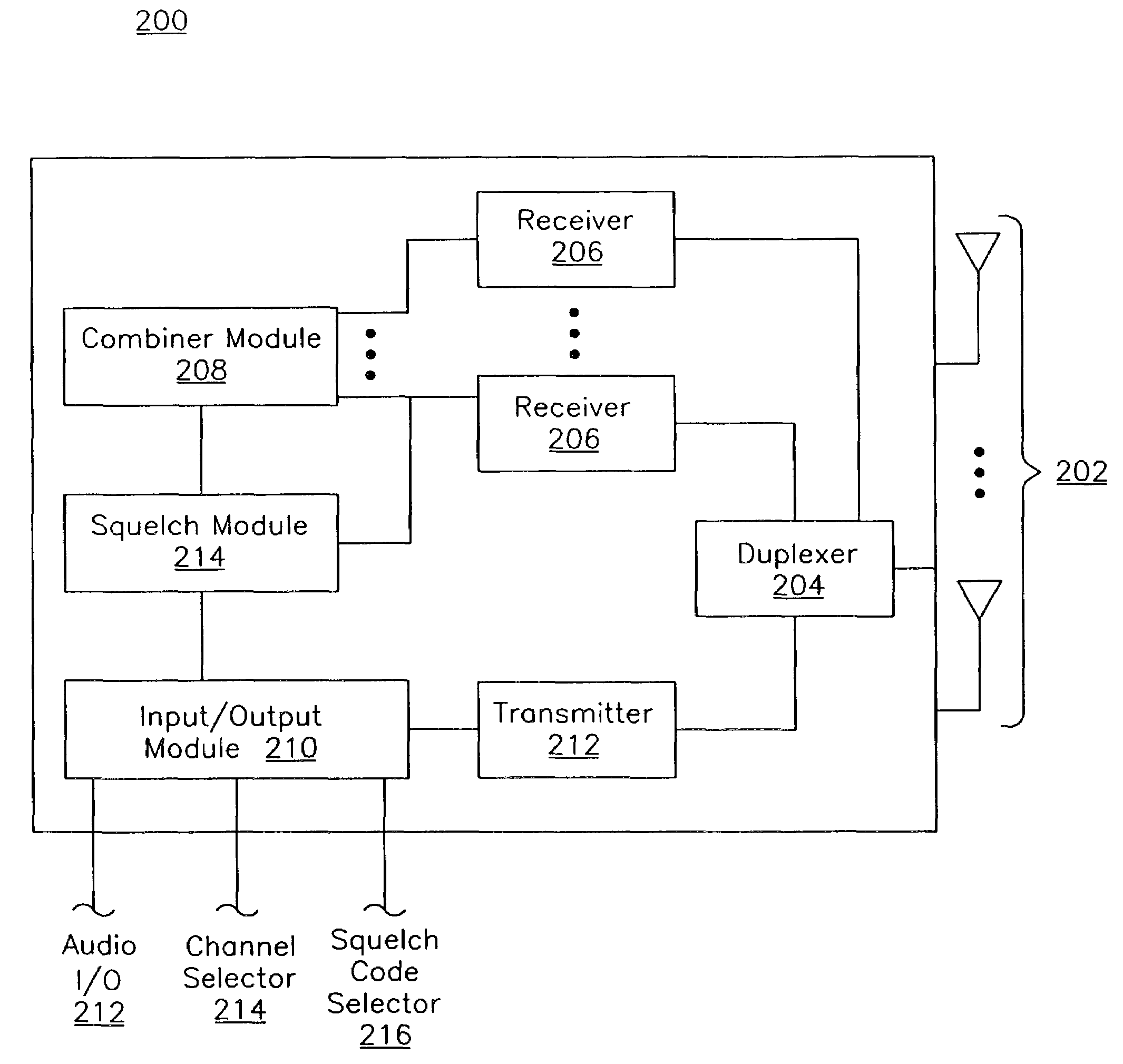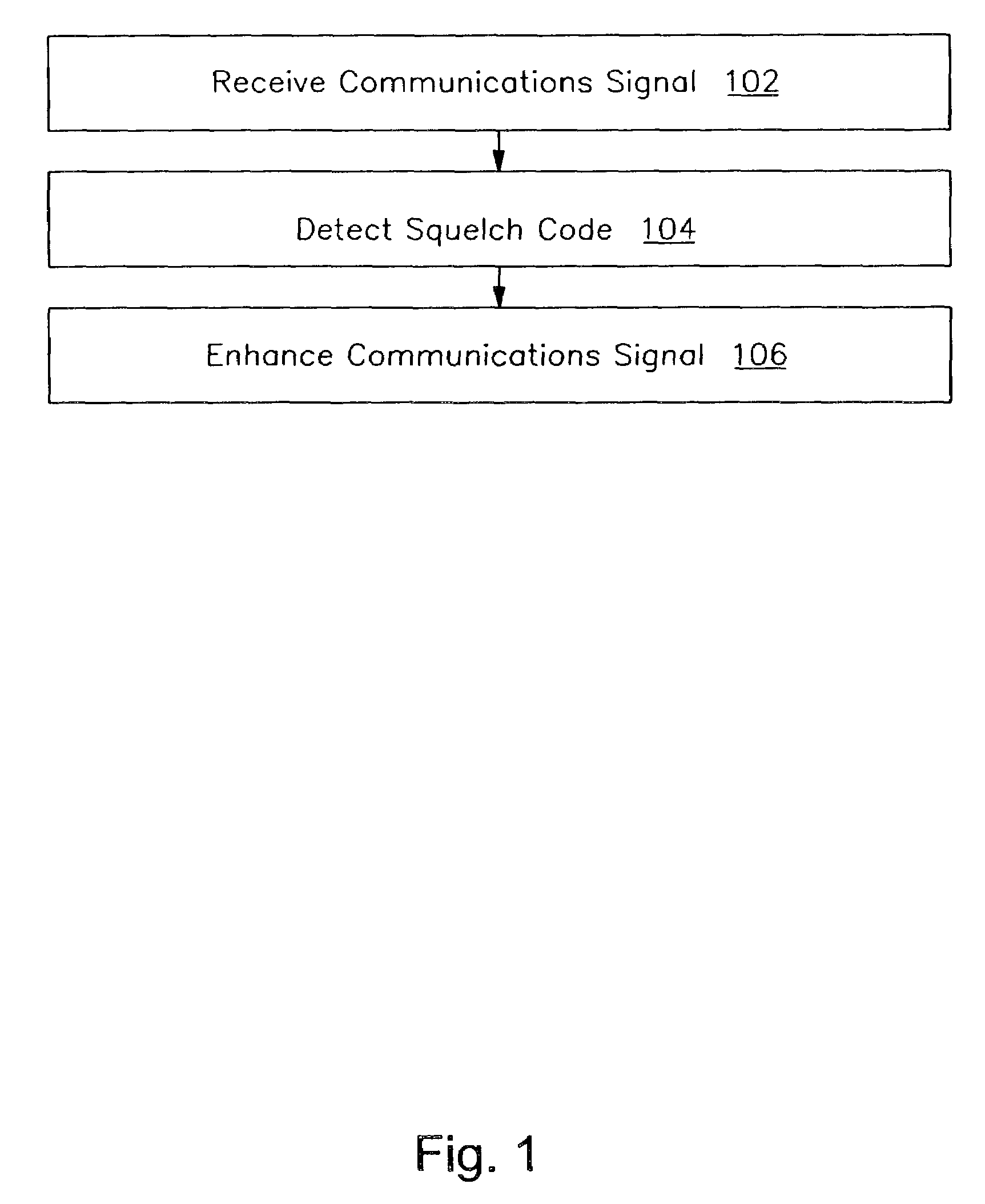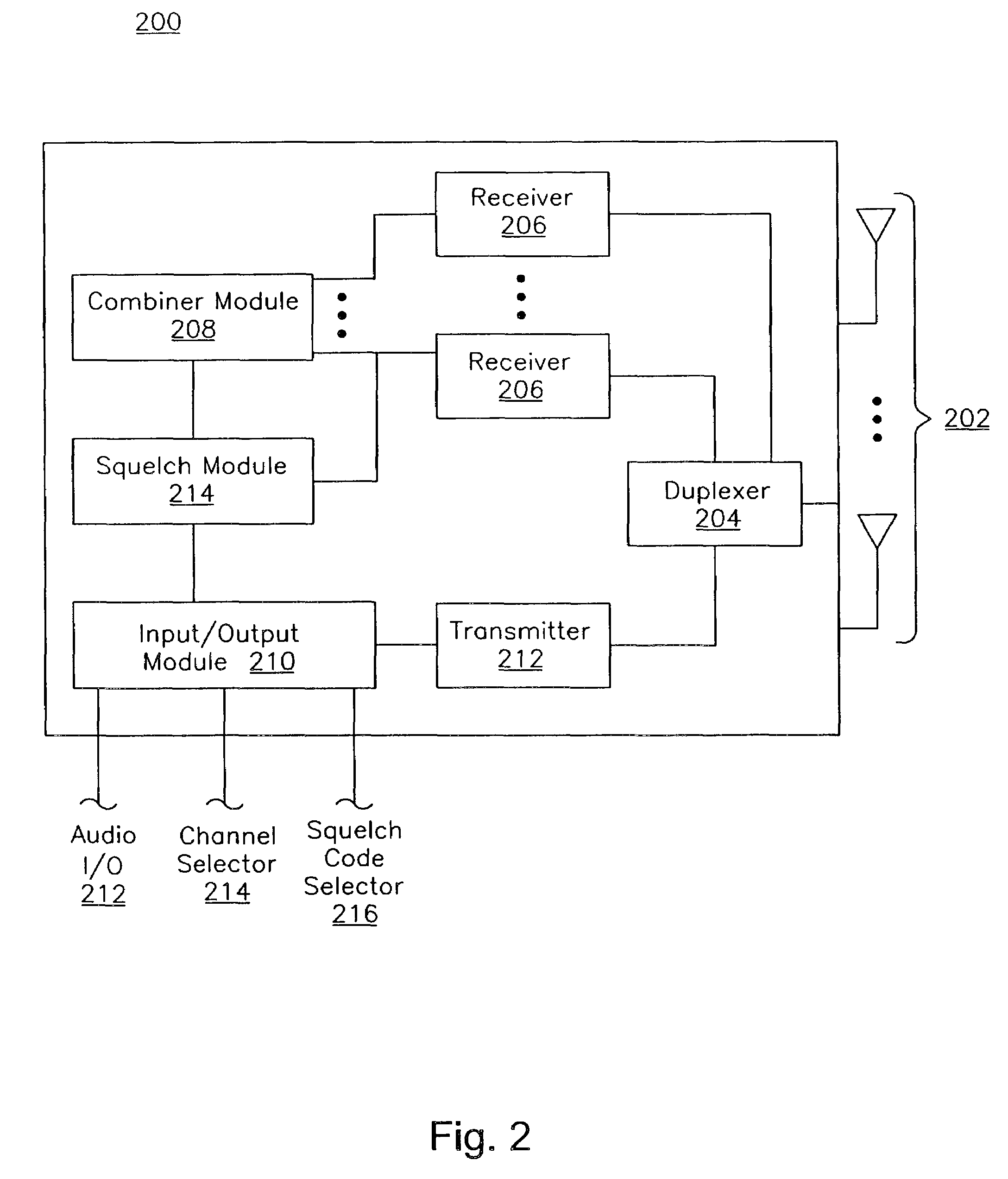Enhancing signals in a two-way radio system
a two-way radio and signal enhancement technology, applied in diversity/multi-antenna systems, electrical equipment, site diversity, etc., can solve problems such as interference with users' communication ability, listeners' likely to hear noise, and signals that interfere with one another, so as to enhance the received communication signal and enhance the signal
- Summary
- Abstract
- Description
- Claims
- Application Information
AI Technical Summary
Benefits of technology
Problems solved by technology
Method used
Image
Examples
Embodiment Construction
[0014]According to one embodiment of the invention, an enhanced FSR radio has an antenna array of two or more antennas. The radio can use the CTCSS tone or the DCS code word as a training signal to determine spatial processing parameters, such as receive weights, to null interferers transmitting simultaneously on the same channel.
[0015]One embodiment of the present invention is now described with reference to FIG. 1. In this example, the user of a two-way radio wishes to communicate with another party herein referred to as the desired party. The user of the two-way radio and the desired party agree on a channel to communicate on using their respective two-way radios. Furthermore, the user and the desired party agree on a sub-channel as marked by a squelch code. Both the selection of the channel and the squelch code can be manual or automatic.
[0016]First, the user's two-way radio receives 102 a communications signal from the desired party. The two-way radio uses two or more antennas,...
PUM
 Login to View More
Login to View More Abstract
Description
Claims
Application Information
 Login to View More
Login to View More - R&D
- Intellectual Property
- Life Sciences
- Materials
- Tech Scout
- Unparalleled Data Quality
- Higher Quality Content
- 60% Fewer Hallucinations
Browse by: Latest US Patents, China's latest patents, Technical Efficacy Thesaurus, Application Domain, Technology Topic, Popular Technical Reports.
© 2025 PatSnap. All rights reserved.Legal|Privacy policy|Modern Slavery Act Transparency Statement|Sitemap|About US| Contact US: help@patsnap.com



